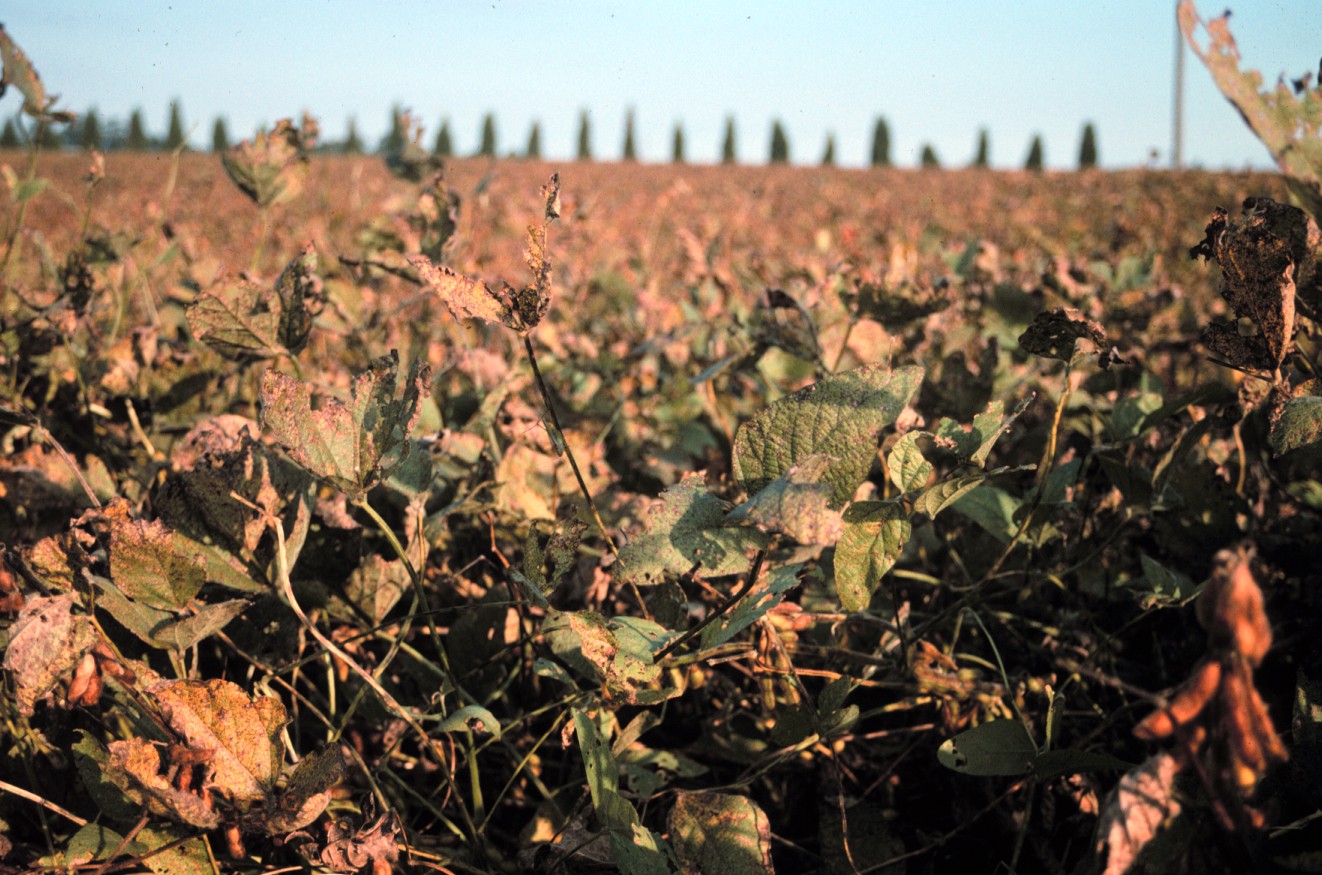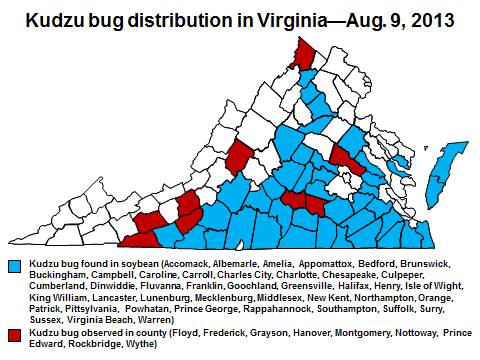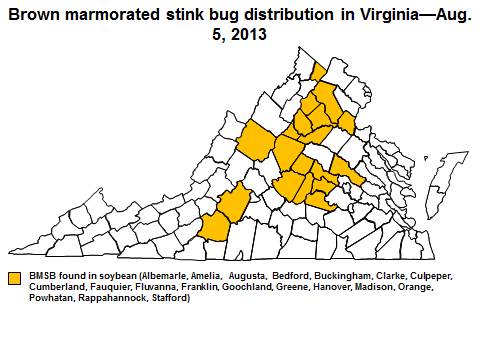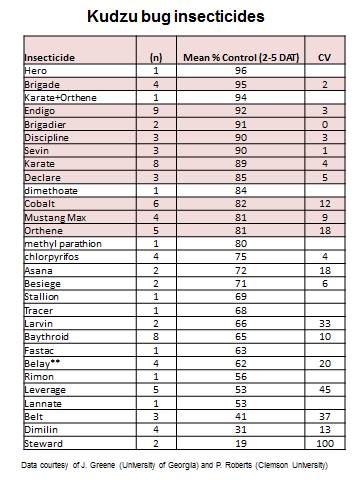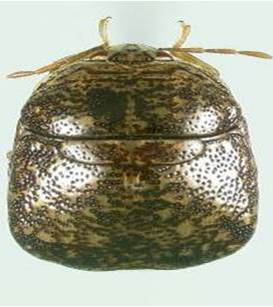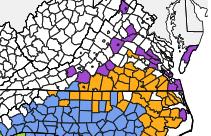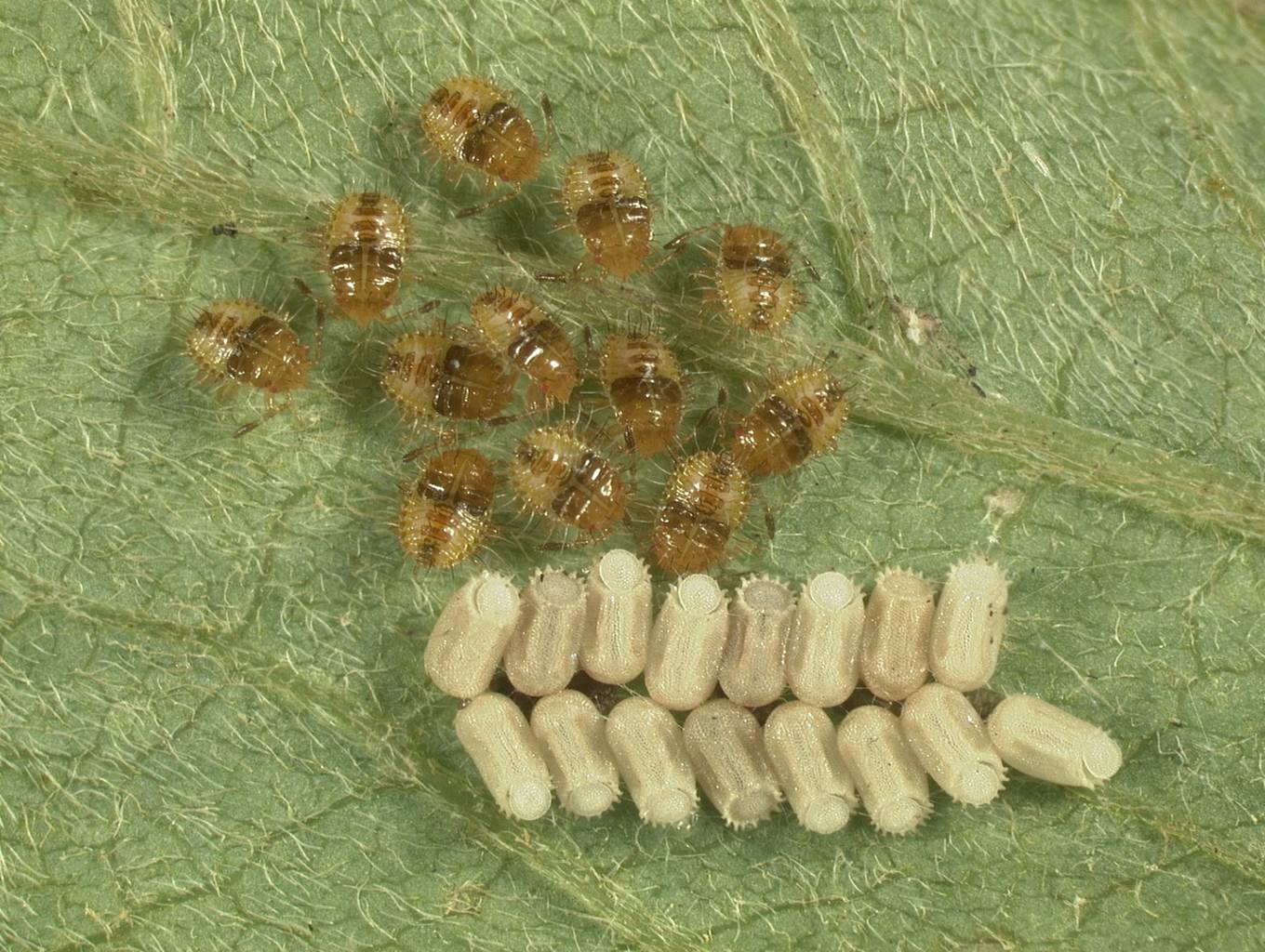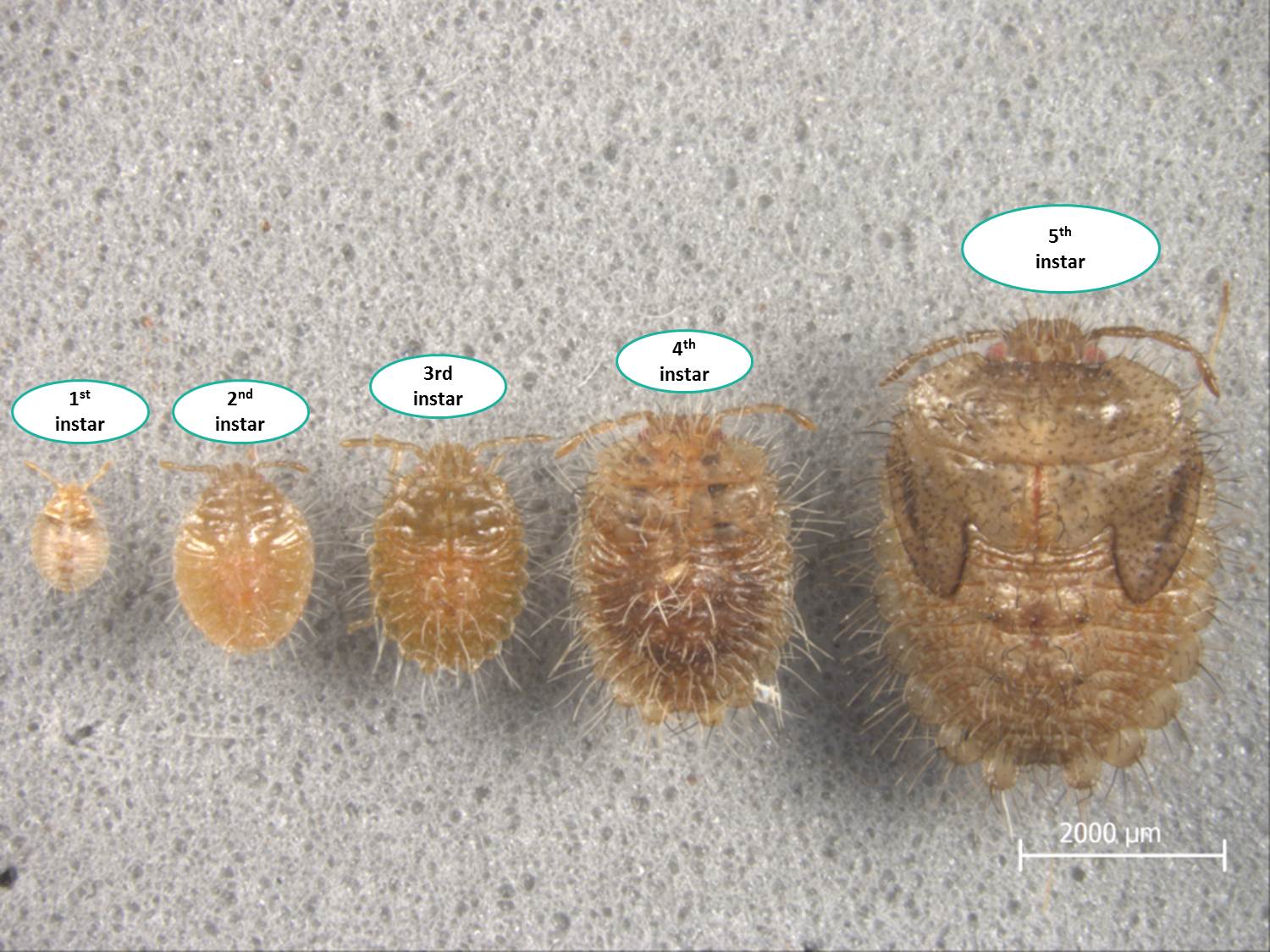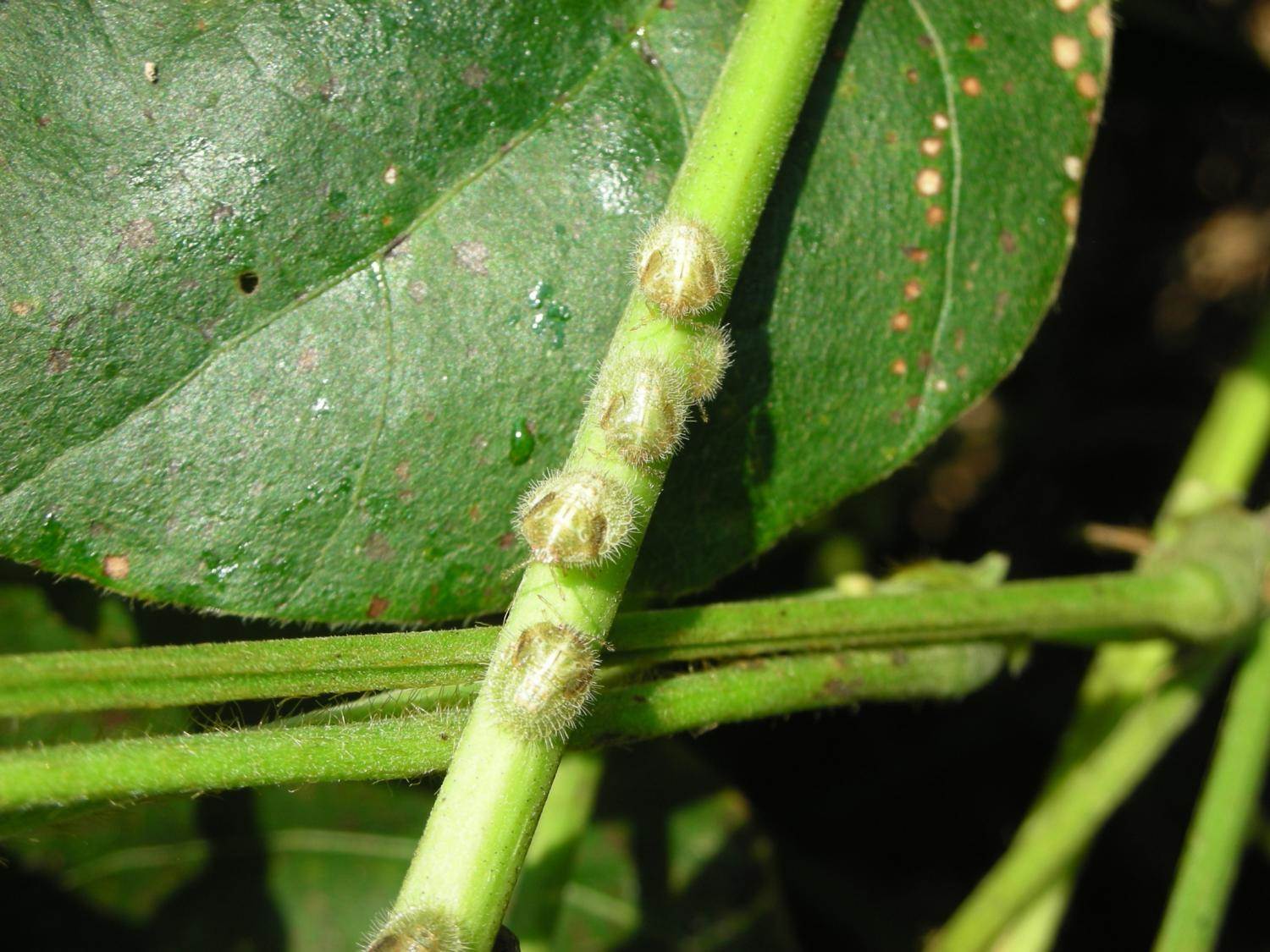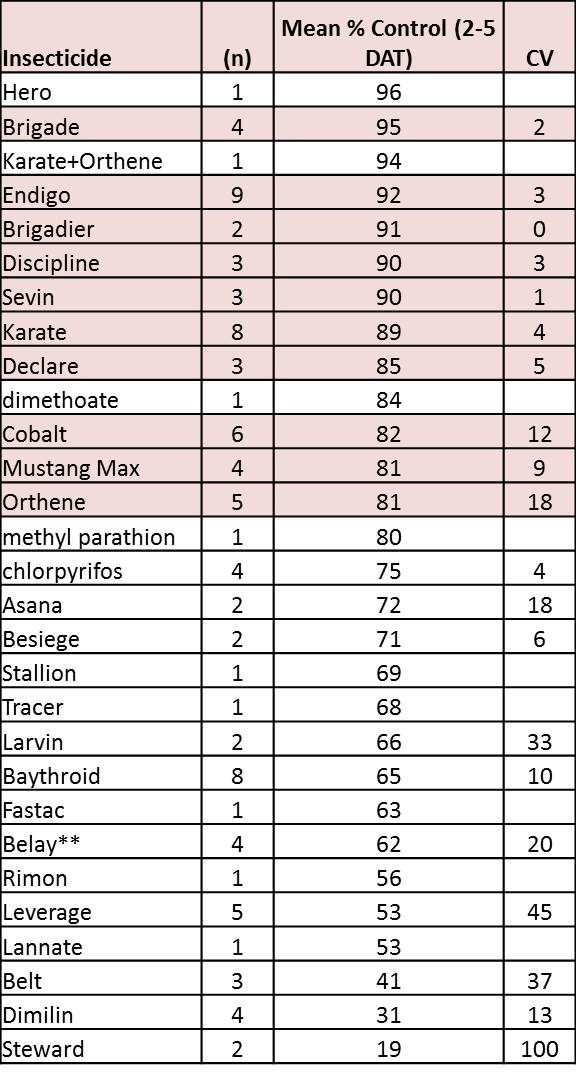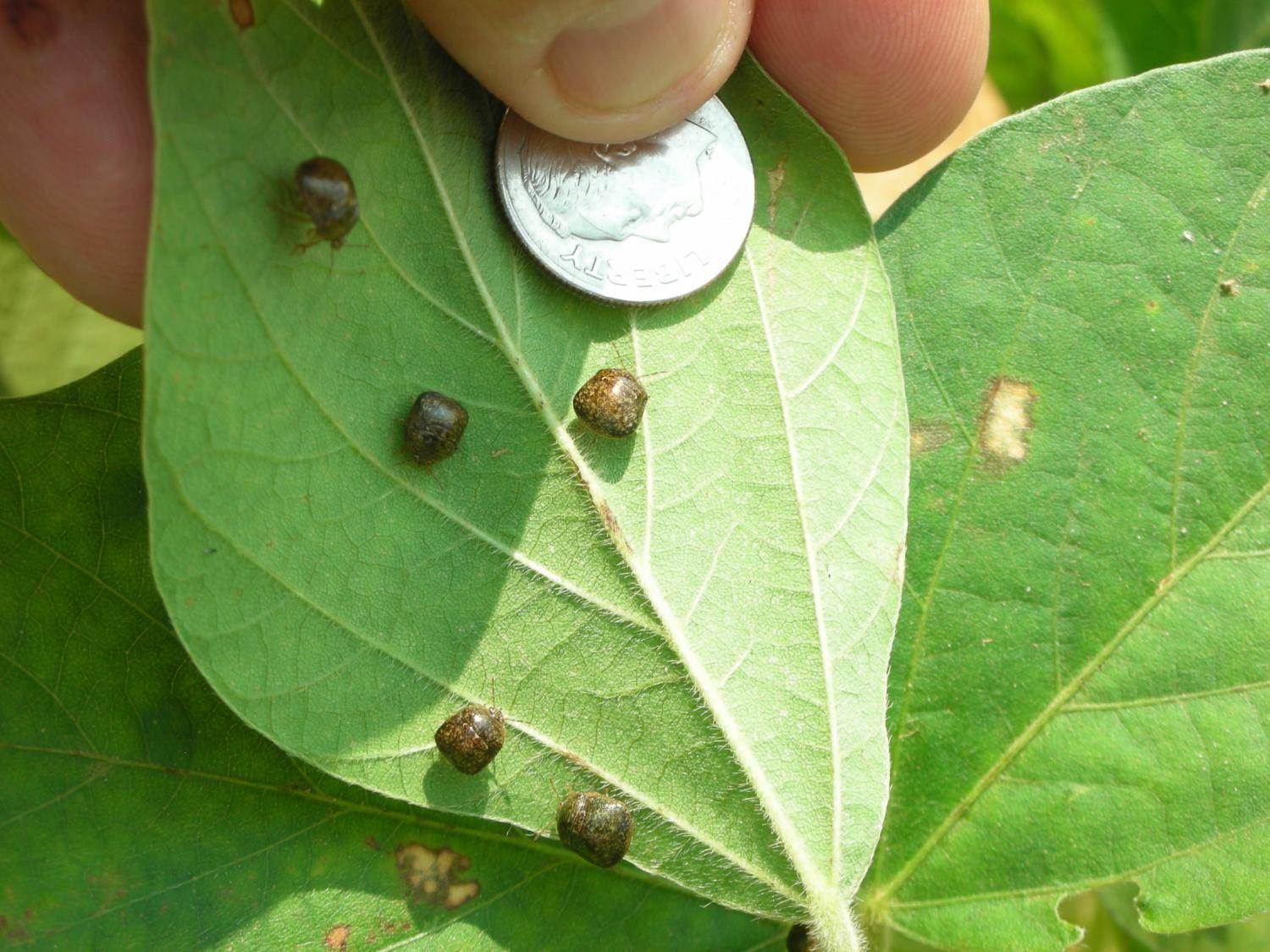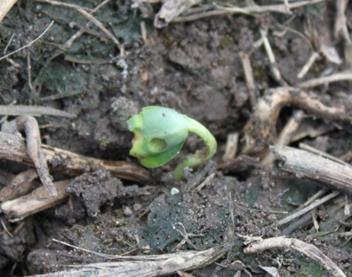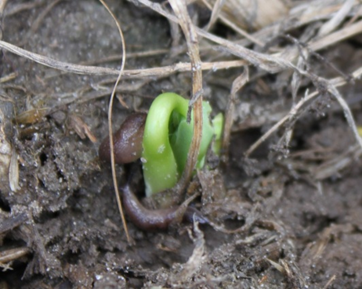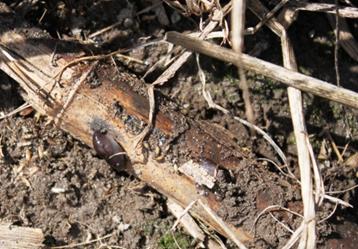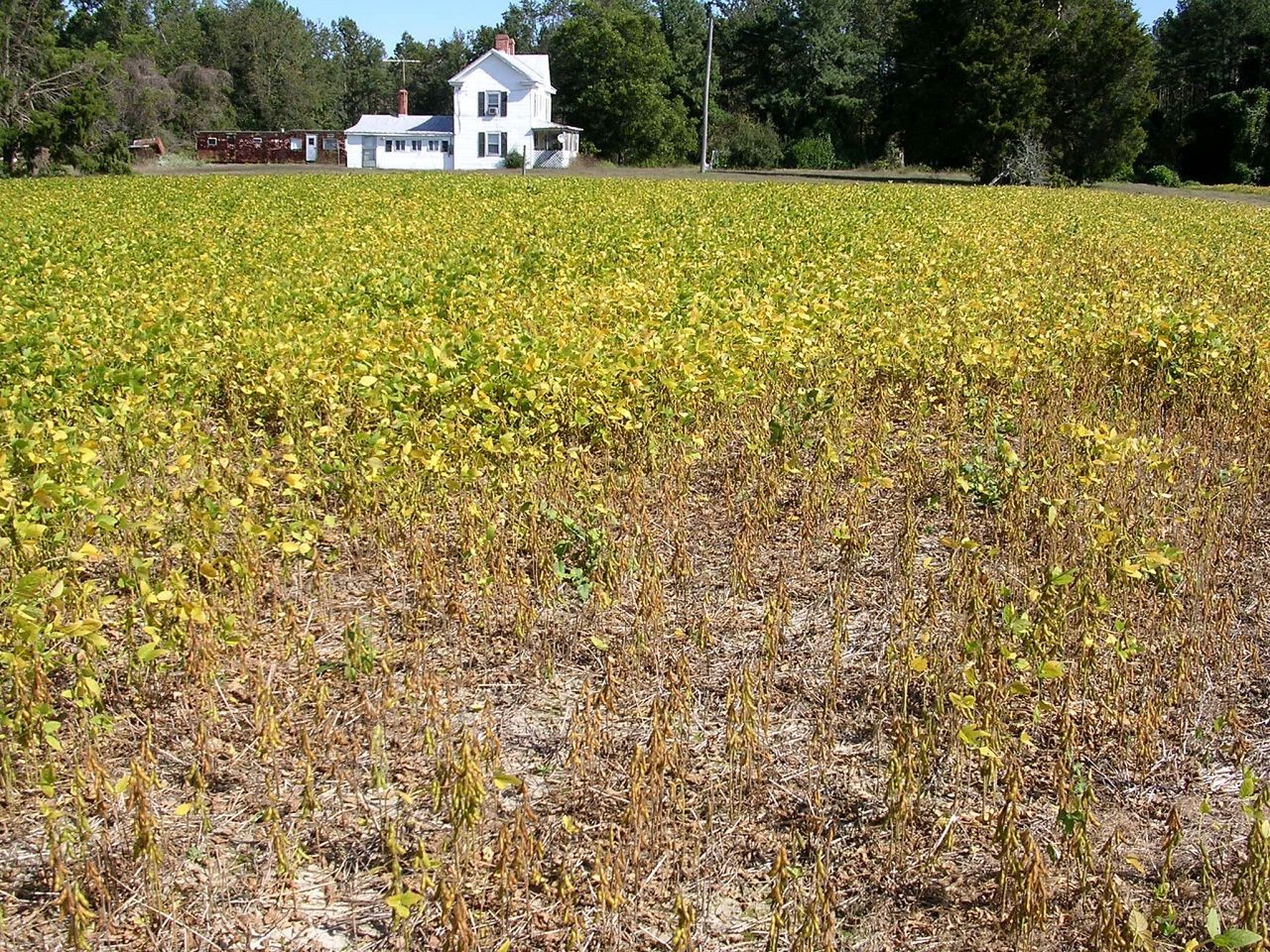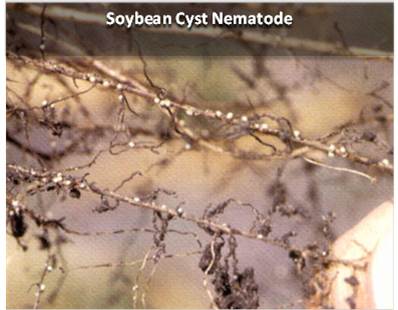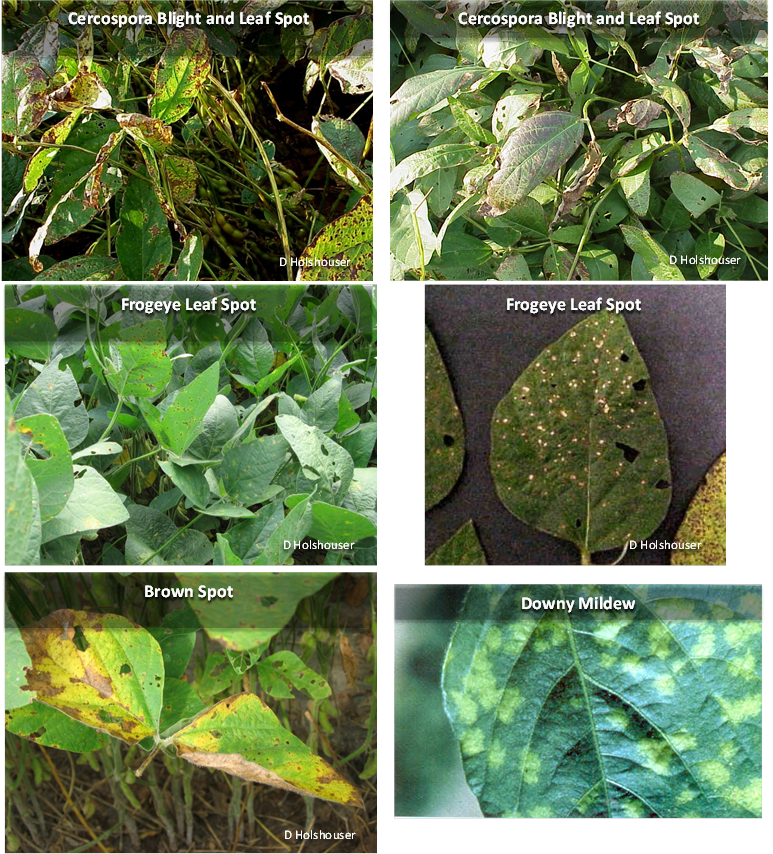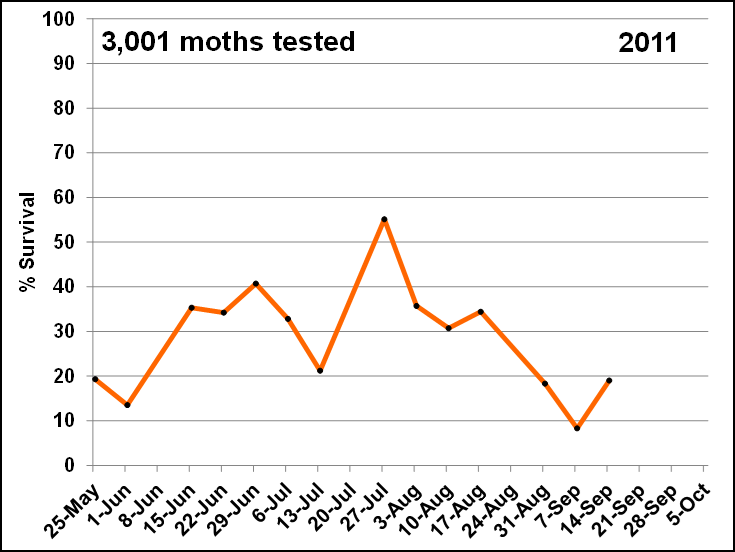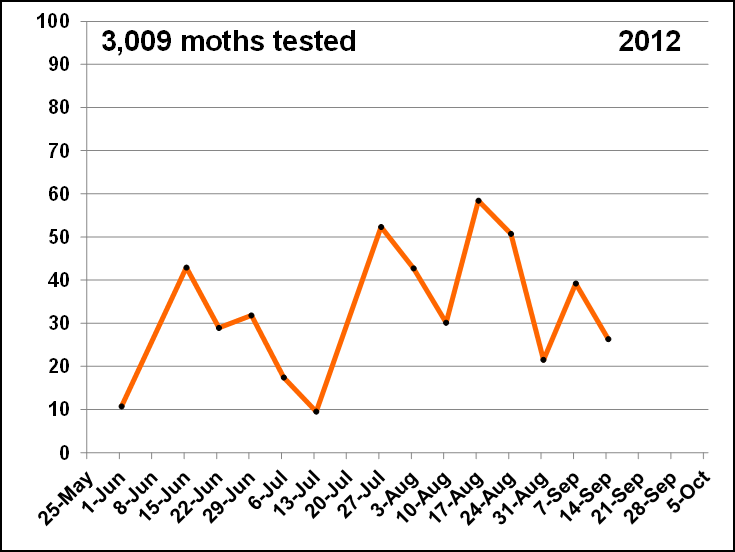It seems that it’s been raining constantly in many places this year. In addition, soybean growth is generally very good, creating a canopy that will maintain high relative humidity through much of the day. Although the long-term forecast has temperatures getting into the 90’s on some days, it looks as if the 80’s will be the norm for the next 10 days or so. These high relative humidity, rainfall events, and favorable temperatures will favor foliar disease in soybean. Therefore, fungicide applications to R3 (beginning pod) to R5 (beginning seed fill) may pay off in 2013.
This past week, I’ve looked at several variety trials, both on-farm and the Official Variety Tests (OVT). I’m seeing a significant amount of frogeye leaf spot. This photo was taken in our OVT in Painter. Although most of our 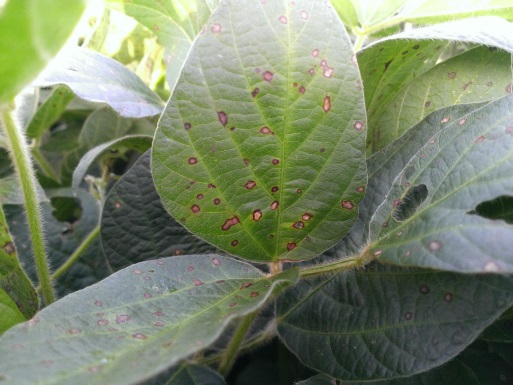 varieties have resistance to this disease, some do not. You should check the seed catalog or with your seedsman to determine whether the varieties that you’re using has resistance to this disease. If not, a fungicide will be in order if you see leaf spots forming.
varieties have resistance to this disease, some do not. You should check the seed catalog or with your seedsman to determine whether the varieties that you’re using has resistance to this disease. If not, a fungicide will be in order if you see leaf spots forming.
Although frogeye leaf spot can be quite devastating, I’m not overly concerned since most varieties are not showing symptoms. However, I consider this disease an indication that conditions are right for disease formation, sort of a “canary in the coalmine”. If frogeye is prevalent, then other diseases such as Cercospora leaf blight will likely be raising its head as well.
Dr. Pat Phipps is developing a model to help us predict whether or not a fungicide will be needed. He has much experience with and has developed effective prediction models in peanut; therefore, we think that such a model may be effective in soybean. He will present his research at next week’s Virginia Soybean Field Day, so be sure to attend to hear his latest update. In the meantime, listed below are the conditions that will favor disease development. We seem to be meeting these criteria.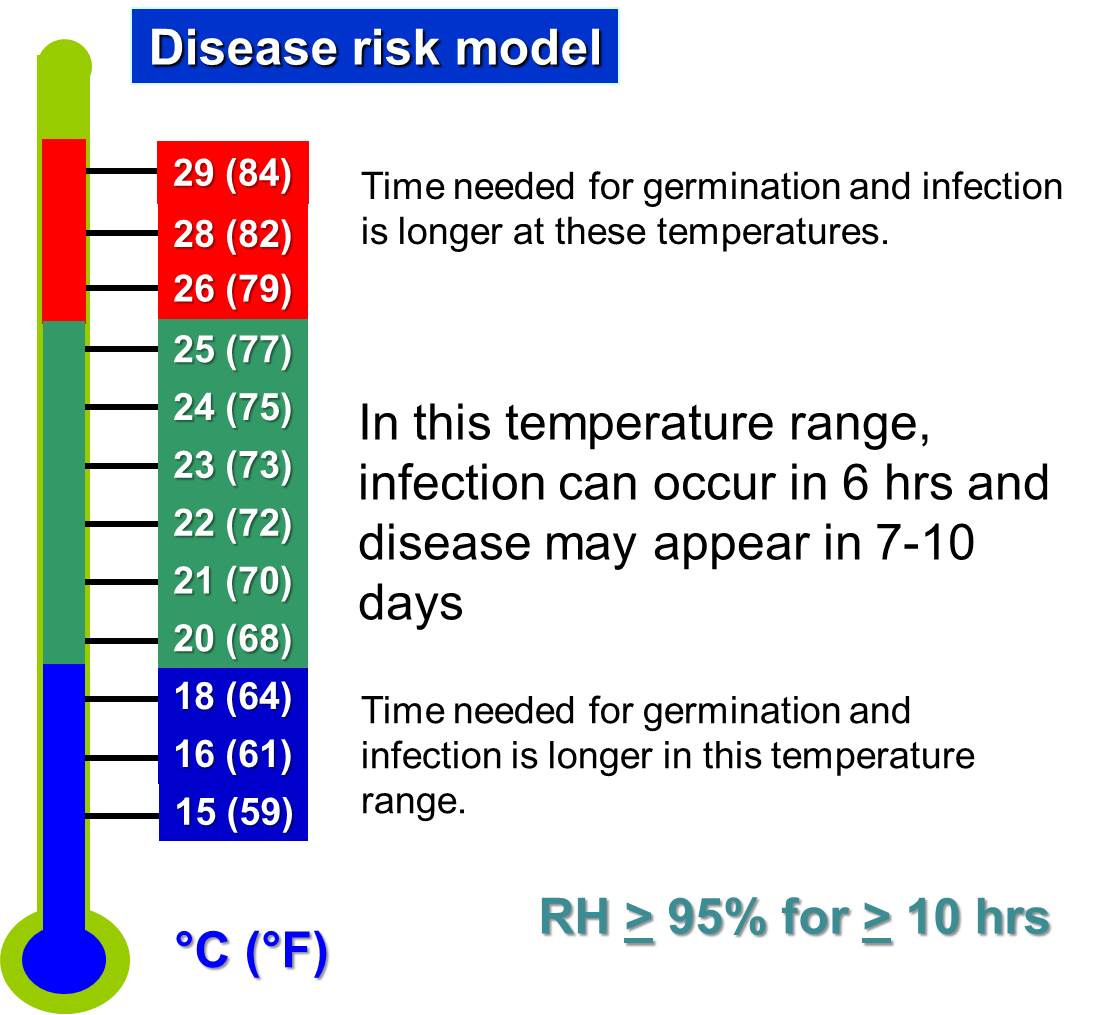
Many of you have likely already applied a fungicide to your full-season soybean. The most consistent yield response has been when the fungicide has been applied at the R3 development stage. However, we’ve seen responses as late as R5 (see article in this newsletter for an example of this). So, with the weather conditions that we’re experiencing, I think that we could see a response even with late applications.
Still, keep in mind that fungicides are preventative; therefore, the weather conditions after the fungicides have been applied are most relevant. Unfortunately, predicting temperatures and rainfall events is not always accurate.
Finally, it is very important to select the proper fungicide. Our research has proven that strobilurin fungicides or pre-mixes that contain a strobilurin fungicide are most effective again the most common soybean diseases that we experience in Virginia. The triazole fungicides are not as effective. However, strobilurin/triazole tank mixes or pre-mixes have tended to give us the best control. Products that have proven effective in our tests and that we would recommend using in soybean include:
Headline (pyraclostrobin)
Quadris (azoxystrobin)
Stratego YLD (trifloxystrobin + prothioconazole)
Priaxor (pyraclostrobin + fluxapyroxad)
Quilt Xcel (azoxystrobin + propiconazole)
Quadris Top (azoxystrobin + difenconazole)
Note that all contain a strobilurin, which we think is necessary.
Keep in mind that if soybean rust were to come into Virginia, we will likely need a triazole as these fungicides are most effective against that disease. Although soybean rust is still far from Virginia (see map below), it is on the move. I suspect that we’ll see the disease in Virginia this year. But, I hope that it comes late as it has done in past years.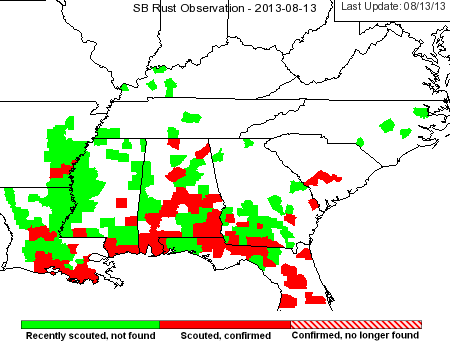
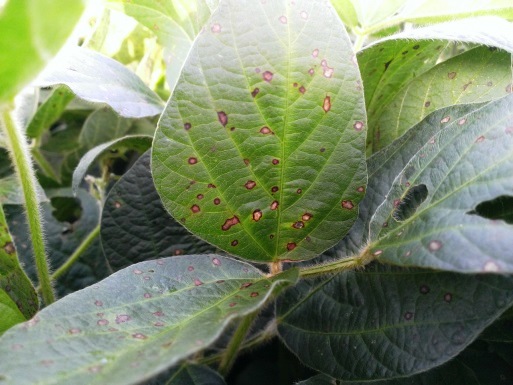 (He’s in the Shenandoah Valley today) has frogeye leaf spot. Some fields are heavily infested (all leaves; up to 20-25 spots per leaflet).
(He’s in the Shenandoah Valley today) has frogeye leaf spot. Some fields are heavily infested (all leaves; up to 20-25 spots per leaflet).